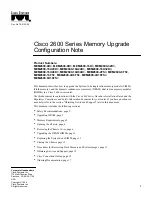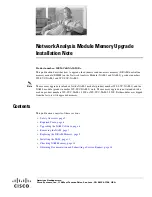
HP StorageWorks iSCSI Feature Pack User Guide
20
What you select depends on where the host is located and how secure you require your
connection to be. For most environments, the server IP address is sufficient and is the
most secure. However, if the host is remotely located across a firewall and you do not
have VPN access, you can use the
Server DNS Name,
assuming your iSCSI
initiator/HBA supports this. Note that using a VPN with the server address is the more
secure way to communicate across a WAN.
NOTE:
The host name that the host communicates with the server as must be a public name
that can be pinged from the host.
5. Select the level of authentication between the Server and the Host Initiator(s):
•
Anonymous
- No authentication.
•
CHAP
- Hosts must authenticate using Challenge Handshake Authentication
Protocol (CHAP). You will have to enter a username and secret that the host must
know when connecting to the server.
•
Mutual CHAP
- Requires both the server and host to authenticate using CHAP. You
will have to enter a username and secret for both systems.
6. Select the iSCSI initiators that this host will use.
Known iSCSI initiators are listed in the dropdown box. If you do not see your initiator,
you can manually add it. You can also register your host initiators with your iSCSI
Feature Pack so that they become known to the iSCSI Feature Pack. If you are using
the Microsoft iSCSI initiator, run
Microsoft iSCSI Initiator
on the host machine. You
can find the program in the Control Panel or on your desktop (if you are the user that
installed it). Click
Add
on the
Target Portals
tab and enter the IP address or name (if
resolvable) of the iSCSI Feature Pack. Use the default socket. If you get a message
that it has been rejected after you click OK to add, ignore it. Once the host attempts to
communicate with the iSCSI Feature Pack, information will be stored about the host’s
initiators.
If you are using a different iSCSI initiator (not the Microsoft iSCSI Initiator), refer to the
documentation that was provided by the vendor.
NOTE:
A host can have multiple initiators, including network interface cards (NICs) and Host
Bus Adapters (HBAs). Be sure to select all initiators from the same host machine.
7. Assign one or more LUs to the newly created host and assign access rights for each.
•
No Access
- This host cannot access this LU.
•
Read Only
- This host will have read-only access to the LU.
NOTE:
If you set Read Only access rights for a LU that contains an NTFS partition, that partition
will only be readable in Windows 2003. The LU will not show up properly in Windows
versions prior to 2003.
















































